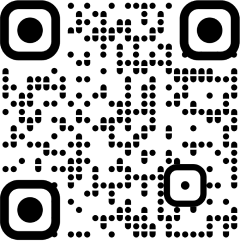
New Delhi: Martin Uhlarik is all smiles when asked if designing an electric vehicle is challenging compared to its internal combustion engine sibling.
“It is actually quite liberating because I finding designing an EV easier than an ICE. The platform is simple and the term skateboard — many ways if you look at it geometrically — is fundamentally a skateboard with four wheels on it rather than a transmission tunnel and a traditional engine bay,” says the Vice President and Head of Global Design, Tata Motors.
As a car designer, continues Uhlarik, traditionally exteriors were given more emphasis and interiors were seen as secondary whereas now interiors have the same weightage — “in fact a little bit more”. As he puts it, “When we are defining a product in the beginning, we also do an ergonomic model in consultation with engineering and assess a lot of things like usability, ergonomics etc. That is not styling but proper design and it really thinks about how the customer will interface with the product.”
In conjunction with engineering, if “you can influence platforms” at that stage: it is not as if “we get a platform and a brief from product planning to make it look attractive”. On the other hand, says Uhlarik, one needs to go much deeper nowadays and get involved in the development right from the beginning or the germination of the idea.
More power to design
The biggest change Uhlarik has seen in a large part of his career is that design would originally report to engineering in the organisational structure and was “almost like a service provider”. Today, at Tata Motors, design is a separate vertical and has equal weightage vis-a-vis the other pillars. “This shows the value and appreciation that it has within the company and this is also resonating with customers,” he says.
Today, one is no longer just designing the product but (designing) the experience and more so with interior design. “If you are an interior designer, you need to consider ergonomics, materials, comfort, visual, harmony etc,” says Uhlarik.
The modern day designer is creating an atmosphere of a space where the occupant is going to spend a few minutes, an hour or five hours depending on his/her journey. “Whether you are the driver or passenger, you have to look at how information is communicated to you and how you communicate,” he says.
Even the idea of UX, UI design did not exist in the automotive field until the advent of the interface. In digital design, user interface (UI) is about the look and feel of a product screen or web page, while user experience (UX) refers to the overall experience.
New hires from other industries
Tata Motors has an entire team now that is just UX, UI designers from the gaming industry. “They usually come from a good design college and it is fascinating because you are constantly learning something new. They are bringing their ideas and knowledge — whether you get them from college or another company — and these people are coming from other industries and not from OEMs or the auto industry,” elaborates Uhlarik.
There is now a discipline called entertainment design — “whether you are working for the movie or gaming industry, you are creating an experience when you think about it”. This needs specific skill sets and the design department is subdivided into exterior, interior, powers and materials, UI and UX. “We still have clay modellers, we make data — the car is built on data – and we have virtual reality,” he says.
With three design studies spread across Pune, the UK and Italy, VR helps the team carry out a review simultaneously be it exterior or interior. “You can be in Pune and with the headset, you are in the driver’s seat and I am in the passenger seat. You and I see what the other is looking at and work out issues that need attention right down to the last millimetre,” says Uhlarik.
With interiors, it is just not the mood or theme but how it is executed. Designers have “a wide spectrum of knowledge” which is broken down into special themes. It is a large team at Tata Motors with nearly 300 designers “but it is never enough”. The welcome part is that everybody is delivering and Uhlarik’s job is to create lieutenants and a team that “you can trust”.
Passion the key driver
As he says, the craft of designing is a passion where everyone is excited about what they we are doing. Young creatives, with an average age of 22-23 years, are now coming into the studio with fresh ideas.
“I remember walking past a band of desks and there was one of our designers with pink hair, headsets on and multiple screens —- there was so much information happening and you wondered what she was doing!! It is a completely fresh world with amazing results and you are always being inspired. We have 12 nationalities across the three studios,” says a clearly pleased Uhlarik.
Will artificial intelligence disrupt the design function and even make jobs redundant? “My portfolio is pencil on paper and markers on paper which is like prehistoric! I have seen during the course of my career the development of digital data, people sketching on a tablet, photoshop and now using VR, new software, making things on 3D etc,” he responds.
They are all tools and ultimately the designer still needs to know what the inputs are and what the objective is and how to process all that. “To me, a designer is the original AI…you could get all the inspiration/influences walking down the street and you head is processing all that. You communicate with a sketch, model or design. AI is a tool and will help accelerate stuff in terms of sketch to production, reviews and eliminating certain elements,” sums up Uhlarik.
Akin to a samurai sword
The traditional approach was to make clay models of the interior which was a time consuming process. Today, reviews are done in VR, and the designer is given the feedback “Wen you design a product, it makes many cuts. The more versions you make, the more refined it is. It is like a samurai sword, the more times you bend the steel, the stronger it is,” he says.
The Chinese are now dominating the EV space and some of their brands’ funky designs have caught the attention of young buyers across the world. Is it now their turn to dominate the design arena? Uhlarik says trends are happening constantly in design where Italian (design) was the dominant theme some years ago.
“Why do we have a studio in Italy? Because we still see value, there is something there that offers fantastic proportions in taste and design as well as innovation and ideas and originality. I am always amazed by what comes out of that studio,” he continues.
China on a roll
Every studio within the Tata Motors ecosystem, likewise, has something to offer. He admits that the Chinese auto industry is “hitting the mark” and the products are very capable/confident. “Right now, China is showing its design capabilities which are very impressive. Before that, it was the Korean auto industry and prior to that the Japanese,” says Uhlarik.
Having worked for a Japanese OEM for quite a number of years, he believes design has a very high value in Japan not only from an automotive point of view but also from the viewpoint of a broad society.
At this point in time, Uhlarik does not see any reason for Tata Motors to set up a studio in China. “If we sold cars in China, I would see a value in it but that is not to say we are not looking and learning from what is happening there or in any other country. For now, three studios are more than adequate and we need to make them as efficient and optimum as possible,” he says.

















